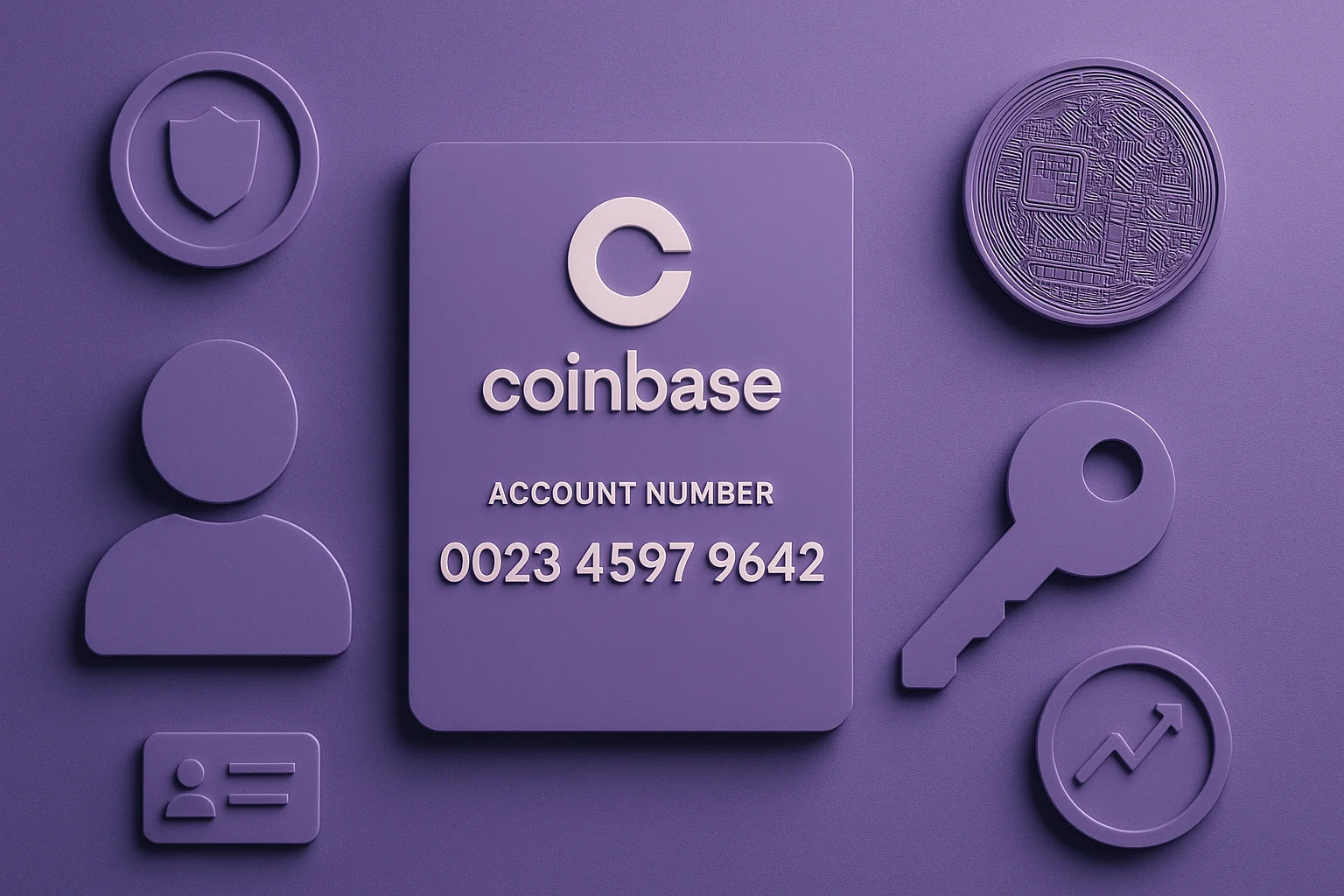The Use Cases of a Digital Signature in Blockchain
Long are the days when being present to sign a document was necessary to prove your identity. Trust was built on physical presence, paper, and ink back then. Today, as digital transformation shapes every aspect of our lives, proving authenticity no longer requires traditional methods. Among these advancements, the digital signature in blockchain is a […]

Long are the days when being present to sign a document was necessary to prove your identity. Trust was built on physical presence, paper, and ink back then. Today, as digital transformation shapes every aspect of our lives, proving authenticity no longer requires traditional methods.
Among these advancements, the digital signature in blockchain is a better solution for verifying the authenticity of messages, transactions, and documents. Thus, in the following sections, we will explore digital signatures in more detail, including how they work and their role in blockchain technology.
What Is a Digital Signature in Blockchain?
A digital signature is a mathematical method designed to confirm the authenticity of digital messages or documents. It guarantees that the content remains unchanged while verifying the sender’s identity.
Digital signatures prove ownership and create integrity within the blockchain. They work on cryptography techniques, combining private and public keys to confirm information securely. Thus, they are a component of digital signature technology, providing trust in decentralized systems.
A digital signature links a sender to their message, ensuring the content is authentic and unchanged. Blockchain achieves this through a simple process involving private and public keys.
Step 1: Signing the Message
The sender creates a hash of the message, a unique identifier for the data. This hash is encrypted with the sender’s private key, producing the digital signature. The signed message is then sent to the recipient.
Step 2: Verifying the Message
The recipient decrypts the signature using the sender’s public key and generates a hash of the received message. If the two hashes match, the message is verified as untampered.
Let’s take the next scenario: Liam sends a document to Emma.
- Liam generates a hash of the document;
- He encrypts it with his private key, creating the digital signature;
- Liam sends the document and signature to Emma;
- Emma decrypts the signature using Liam’s public key;
- She generates her document hash and compares it with the decrypted hash;
- If the hashes match, Ella confirms the document is authentic.
Top 6 Types of Digital Signature Algorithms
Different types of algorithms are used to create and verify digital signatures. Each one has its purpose and benefits. Here are some examples:
- RSA is a well-known method that uses two special keys to sign and verify messages. Giving them enough security while working well in many situations.
- ECDSA offers a faster method to use in blockchain systems like Bitcoin. It keeps data safe while using less space and power.
- Schnorr Signature combines multiple signatures into one, saving space and speeding up the process.
- BLS Signature reduces data size by combining many signatures into one. This makes it great for systems with many transactions.
- EdDSA is a modern method that is secure and quick. It avoids common risks by not using random numbers.
- CRYSTALS-Dilithium protects data against future threats from quantum computers. It’s being developed to make systems ready for the future.
Conventional Signature vs. Digital Signature
The role of digital signature technology becomes clearer when compared to traditional authentication methods. While digital signatures rely on cryptographic processes for validation, conventional signatures are tied to physical documents and manual verification.
Both conventional signatures and digital signatures serve to authenticate documents and messages, but their methods are distinct. But let’s see how:
Attachment to Documents: A conventional signature is physically part of the document, such as signing a check. In contrast, a digital signature is separate from the document but securely linked through cryptographic methods.
Verification Process: Conventional signatures require manual comparison with a stored reference. Digital signature technology, however, uses a hash function and a combination of private and public keys to validate authenticity without needing to store a copy of the signature.
Uniqueness and Security: A single conventional signature can be reused across multiple documents, which might lead to fraud. Digital signatures, on the other hand, are different because they are unique to each transaction, making them far more safe.
Traceability: Conventional signatures can be hard to trace when signed without timestamps. Digital signatures often come with a timestamp, so you can easily verify exactly when a document was signed.
The Importance of Digital Signatures in Blockchain
Now that we understand digital signatures, let’s move to how they help in blockchain. Digital signatures have a special role in making sure that blockchain data is secure, and this is done by:
1. Data Integrity
In blockchain, preserving data integrity ensures maintaining trust. Even the smallest change to a transaction can compromise the entire system.
How It Works:
Digital signatures generate a hash for each transaction, which acts as its unique identifier. If any data is altered, the hash changes, invalidating the transaction.
Why It Matters:
For example, smart contracts rely on this mechanism to ensure their instructions remain unaltered, making the blockchain an immutable ledger. This makes sure that all data stored is dependable.
2. Authenticity:
Authenticity means knowing that a message or transaction is sent by the person who claims to have sent it. In the context of blockchain, this is done to prevent fraud.
How It Works:
The sender uses a private key to sign a transaction, creating a signature that links the message to them. The recipient can check the signature using the sender’s public key. Doing so confirms that the message is original and hasn’t been changed.
Why It’s Important:
For example, in a cryptocurrency transfer, the signature shows that the transaction was approved by the sender. This process confirms that only the rightful person can authorize actions, making it reliable.
3. Message Nonrepudiation
The goal of message nonrepudiation is to prevent anyone from denying they sent a transaction once it’s recorded. Blockchain achieves this by linking each action to the sender’s unique digital signature.
How It Works:
The sender creates a signature for their transaction using a private key. This signature is permanently recorded on the blockchain and cannot be removed or changed once it has been added. Anyone with the sender’s public key can verify the signature, proving who initiated the action.
Practical Example:
Imagine a legal document signed and stored on the blockchain. If there’s a disagreement later, the digital signature serves as solid proof of who signed it and when. This removes any doubt, as both parties are held accountable.
Additional Considerations
While the above points highlight the primary benefits, digital signatures also contribute to other aspects of blockchain. For instance:
Improved Efficiency: Digital signatures automate verification processes, eliminating the need for intermediaries, saving time, and reducing costs.
Transparency: Blockchain transparency benefits from timestamping, which provides a dependable way to follow transactions and confirm their accuracy without exposing sensitive data.
The Best Features of Digital Signatures in Blockchain
As digital processes become the norm, digital signatures stand out for their ability to simplify tasks, secure digital messages, and provide legal validity for electronic documents. These benefits have made them essential across industries.
- Data Integrity and Trust: A digital signature scheme detects any unauthorized modification to transaction data. The combination of hash functions and cryptographic keys keeps content intact.
- Simplified Workflows: Using digital signature technology, organizations and individuals can sign documents from anywhere, avoiding manual processes. This automation saves time while ensuring tasks are completed efficiently.
- Legal and Global Compliance: Digital signatures are globally recognized and meet strict legal standards. They provide trusted validation for electronic signatures and agreements used in government, healthcare, or finance.
- Audit and Traceability: Every signed document creates a transparent trail. This makes tracking and verifying actions easier and reduces the likelihood of errors or disputes.
- Eco-Friendly Practices: By replacing physical documentation, digital signatures reduce paper usage and support sustainability goals, contributing to a greener future.
Where Digital Signatures Are Used in Blockchain
As industries continue to adopt blockchain, digital signatures have become trustworthy. Below are some of the important applications:
1. Healthcare
In the healthcare sector, where sensitive data workflows are sensitive, digital signatures bring multiple benefits. For example:
- Prescriptions are digitally signed to prevent unauthorized changes.
- Patient admission records are verified using digital signature technology to ensure authenticity.
2. Legal
Legal processes benefit significantly from digital signatures:
- Contracts are signed remotely using a digital signature scheme, reducing delays and verifying all parties’ identities.
- The immutable nature of blockchain ensures that signed agreements remain tamper-proof.
3. Government
Governments worldwide adopt digital messages and signatures for various purposes:
- Filing tax returns and verifying business-to-government transactions.
- Securing public records and managing large-scale contracts.
4. Financial Services
In financial services, digital signatures work to protect sensitive operations:
- Loan agreements and expense reports are signed electronically, maintaining security and reducing processing times.
- Each transaction is linked to a unique handwritten signature equivalent, which provides accountability.
5. Cryptocurrencies
Cryptocurrencies rely on digital signature technology as:
- Transactions are authenticated, ensuring data integrity.
- Ownership of assets is verified securely without intermediaries.
Additional Applications
- Education: Verifying academic credentials to prevent fraud.
- E-commerce: Validating online purchases and vendor identities.
- Manufacturing: Digitally signing product designs and quality assurance documents to streamline operations.
Create Your Digital Signature in Blockchain
Creating a digital signature for blockchain may initially seem complex, but it’s straightforward when broken into simple steps. Here’s exactly how you can create one:
Step 1: Generate Your Keys
- Private Key: This is your secret key. Think of it like the PIN for your bank card – keep it safe and never share it.
- Public Key: This key is shared with others to verify your transactions. It’s like your account number – safe to share but essential for validation.
Example: Imagine Emma wants to send funds securely. She generates a private key to sign her transaction and a public key to share with the network.
Step 2: Hash Your Data
Take the message, document, or transaction you want to secure and process it through a hash function. This creates a unique digital fingerprint of your data.
Why This Is Important:
- The hash ensures that any changes to the data, even a single character, will produce a completely different fingerprint.
- It’s impossible to reverse-engineer the original data from the hash.
Example: Emma inputs her transaction details into a hash function, which outputs a unique code representing her transaction.
Step 3: Sign the Hash with Your Private Key
Encrypt the hash with your private key. This creates your digital signature, which is unique to you and your transaction.
Example: Emma uses her private key to sign the hash. This signature links the transaction to her and proves it came from her.
Step 4: Share the Signed Transaction
Send the signed transaction and your public key to the recipient or broadcast it to the blockchain network.
Example: Emma sends her signed transaction and public key to the blockchain. The network nodes will now verify her signature.
Step 5: Verify the Signature
The recipient or network nodes will:
- Use Emma’s public key to decrypt the signature.
- Recreate the hash from the transaction data.
- Compare the decrypted hash with the recreated hash.
If the two hashes match, the signature is valid, proving Emma is the sender and the transaction is untampered.
Example: The blockchain network verifies Emma’s signature and confirms the authentic transaction. If the hashes don’t match, the network rejects it.
Step 6: Add to the Blockchain
Once verified, the transaction is added to the blockchain as a new block. This block is linked to previous blocks, forming a secure, unchangeable ledger.
Example: Emma’s transaction becomes part of the blockchain, recorded permanently and securely for all participants to see.
FAQ
Can digital signatures in blockchain be hacked or forged?
No, it’s extremely difficult to hack or forge a digital signature in blockchain. This technology relies on public key cryptography, which uses a unique private key known only to the user. Your digital signature is safe as long as you keep your private key secure.
How do digital signatures contribute to data security?
Digital signatures create a secure connection between the sender and the data. Using public and private keys ensures that data is protected from tampering. This process involves key and signature aggregation, which allows multiple approvals to be combined efficiently.
What role does hashing play in digital signatures?
Hashing creates a unique digital “fingerprint” of your data. The hash will be completely different if even one small part of the data changes. This creates the integrity of your data and helps detect any tampering.
How do digital signatures simplify workflows?
Digital signatures streamline processes by enabling quick and secure approvals. For example, with key and signature aggregation, multiple parties can approve a transaction in one step, saving time and reducing errors.
Are digital signatures legally valid for electronic documents?
Yes, digital signatures are widely recognized as legally binding for an electronic document. They provide a reliable way to verify authenticity, making them suitable for worldwide contracts, agreements, and other official uses.
Final Thoughts
Using a digital signature in blockchain is practical, secure, and user-friendly. They connect the sender to their data, providing authenticity at every step. That’s not all; advancements like BLS signatures enable key functionality, simplifying even complex transactions without sacrificing security.
Whether signing an electronic signature for a document or verifying blockchain activity, digital signatures create trust by linking users to their data. They’re not just a tool—they’re a part of today’s digital world, allowing efficiency for users everywhere.



